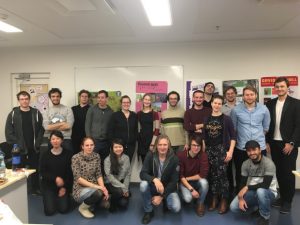 Course overview
Course overview
The goal of the course is to develop practical skills and theoretical knowledge in the area of 2D computer game graphics, design concept art, and graphical 2D elements for game projects. The course introduces students to vector graphics, advanced shapes, vector graphics effects, colour models, scales and technical drawing techniques, raster graphics, layers and selections, masks, colour manipulation, raster effects, and web graphics. More detailed information on the course is available at https://ois2.tlu.ee/tluois/subject/IFI7319.DT .
Participants in piloting
The course in an elective in the Digital Learning Games Master’s program. It is also part of the Game Elective Module for the Educational Technology Masters’ program. For Digital Learning Games, the course takes place in the 1st semester of the academic year, from September to December. For Educational Technologies students the course takes place in the 3rd semester.
The course took place in the fall of 2019, with the participating of 26 students, of whom 3 were enrolled in the Educational Technology program, 21 were enrolled in the Digital Learning Games students, and 2 were Erasmus+ exchange students.
Timeframe
Fall 2019
Use of ALIEN services and tools
The course was closer to traditional university teaching activities. Classes took place in the university computer lab. At the beginning of each lesson the teacher introduced the concepts and techniques useful for the topic of the class. The 2nd part of the class was dedicated for student individual work. The teacher helped students individually by responding to questions. Every class ended with an individual assignment. To complete this assignment, students had the option of using the university computer lab for completing the activities or to work at home.
Innovative assessment methods were used during the course:
- Students were asked to submit the results of the individual assignments before the next class via a digital learning environment, and specifically Google® Classroom. At the beginning of every class the results of home assignments were presented by the teacher to all class participants. Additional questions on the selected tools and final design were asked. Students had a chance to comment on their own and fellow students work.
- Best works were published in social media such as Facebook® or Instagram® (https://www.facebook.com/media/set/?vanity=digitallearninggames&set=a.1837226059726901 ).
- The course ended with a semi-public exhibition opening. Students were asked to design and print a poster on the collection of their course work and present to the audience. After completing the official part of the exhibition more informal activities followed. Students and academic staff members had a chance to chat and consume snacks and drinks.


